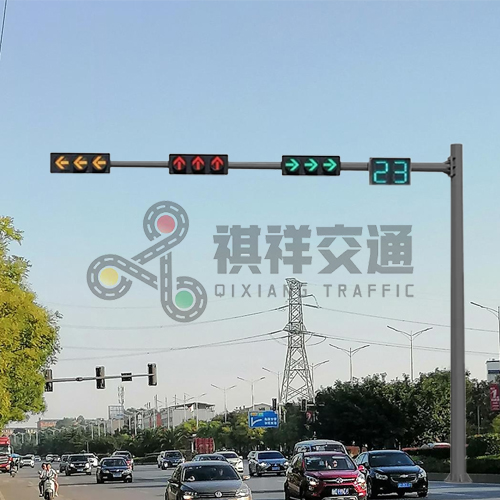In traffic management, one of the most important elements is the traffic light pole. These structures firmly house the traffic lights, ensuring their visibility and functionality on the road. But have you ever wondered what traffic light poles are made of? In this article, we take an in-depth look at the materials used to build these important components of traffic control systems.
There are many traffic signal pole types, including:
Standard Poles:
These are the most common types of traffic signal poles, usually made of steel or aluminum, and are designed to accommodate traffic signal heads and other equipment.
Decorative poles:
These are aesthetically designed poles, often used in urban areas or historic districts to blend in with surrounding buildings or landscaping.
Cantilever Poles:
These poles are used to support overhead signs or signals and extend horizontally from a single support structure rather than being mounted vertically.
Articulated Rods:
These rods are designed to bend or collapse on impact, reducing the chance of serious damage or injury in an accident.
Middle Masts:
These taller poles are used on highways or wide roads that require a higher mounting height for improved driver visibility.
Jumper Poles:
These poles are used to secure traffic signal equipment where space or obstructions are limited, such as at sharp intersections or overhead installations. These are just a few examples and the exact number of traffic signal pole types may vary depending on local regulations and specific project requirements.
Traffic light poles are primarily made of two materials: steel and aluminum. Each material has unique properties and is suitable for different urban and rural environments.
Steel is a commonly used material for its strength and durability. The steel most commonly used for traffic light poles is usually high strength carbon steel such as Q235/Q345. These steels are known for their durability, high tensile strength, and weather resistance. Additionally, galvanized steel is often used in traffic light poles to provide corrosion resistance and extend their life. It can withstand harsh weather conditions and is highly resistant to corrosion. Steel traffic light poles are often galvanized or painted to prevent rust from rain, snow, or sunlight. In addition, steel is a versatile material that is flexible in design, making it easier to adapt to various road layouts.
Aluminum is another often-chosen material for traffic light poles. It has some of the qualities of steel, such as durability and corrosion resistance. However, aluminum is lighter and more malleable, which makes it easier to install and transport. In addition, the aluminum poles have a sleek and modern look that enhances the beauty of the cityscape. However, due to aluminum’s lighter weight, it may not be suitable for areas with high winds or heavy traffic.
In my opinion
Traffic pole manufacturer Qixiang believes that the selection of traffic light pole materials should be based on the specific requirements and conditions of the location. In highly urbanized areas where aesthetics are paramount, aluminum poles may be the first choice due to their contemporary appearance. On the other hand, in areas prone to severe weather or heavy traffic, steel poles can provide the necessary strength and durability.
In conclusion
Traffic light poles are an important part of the traffic management system, ensuring the safety and efficiency of road users. The materials used to construct the poles, including steel and aluminum, were carefully selected for their unique properties and suitability for different environments. Deciding which material to use should consider factors such as strength, durability, aesthetics, and cost-effectiveness. By choosing the most suitable material, we can ensure that traffic light poles perform their role effectively in our daily lives.
If you are interested in traffic poles, welcome to contact traffic pole manufacturer Qixiang to read more.
Post time: Jul-18-2023







